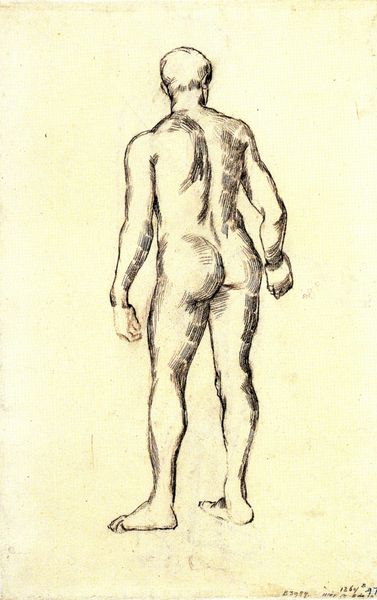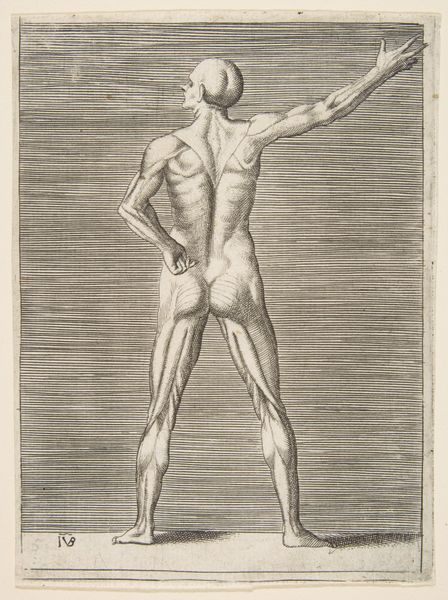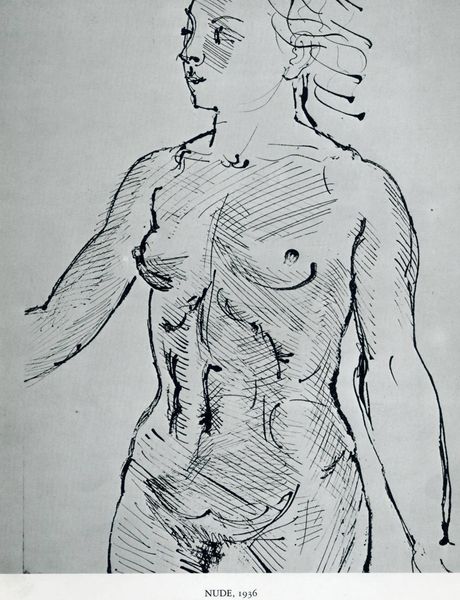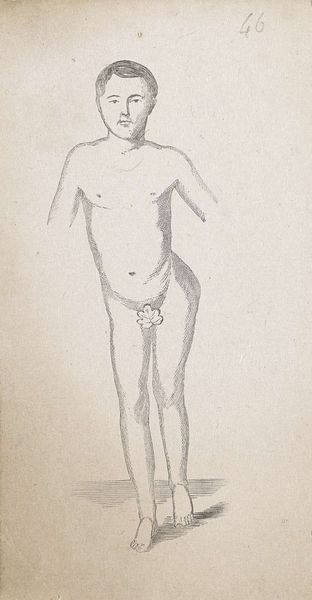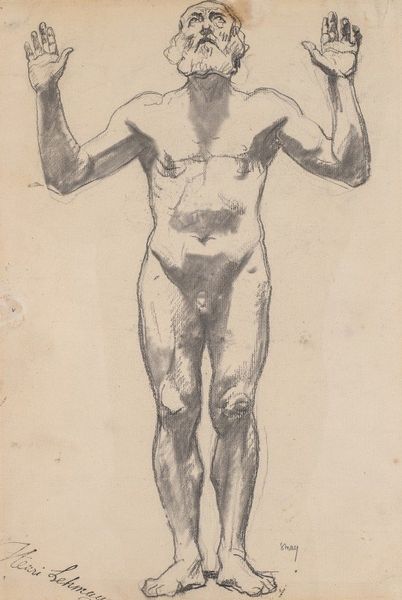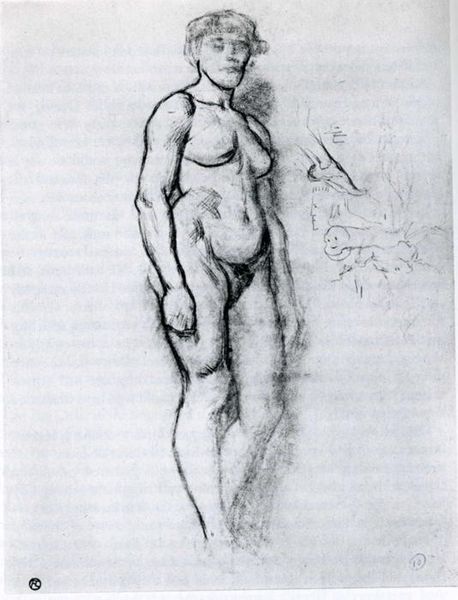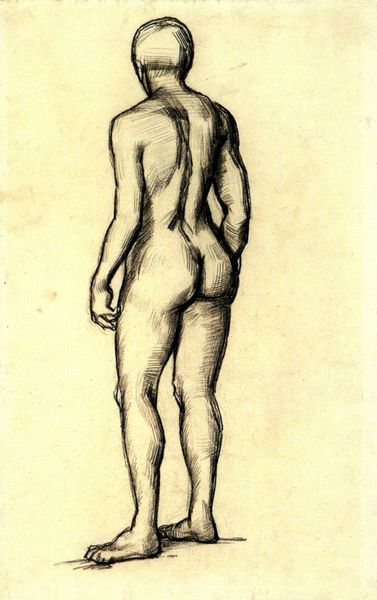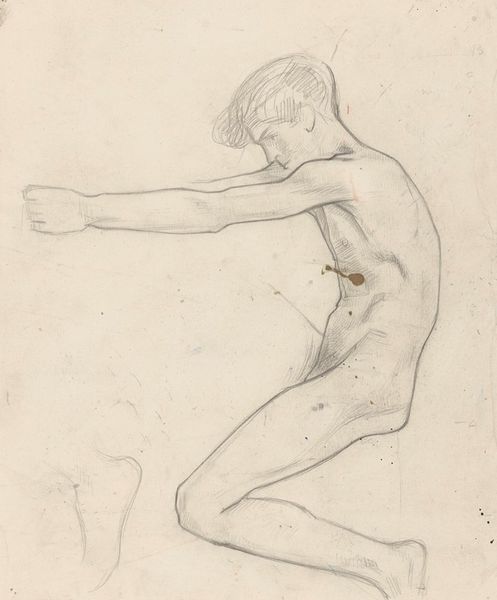
drawing
#
drawing
#
figuration
#
sketch
#
academic-art
#
male-nude
#
realism
Copyright: Public domain
Editor: This is Vincent van Gogh's 1887 drawing, L'Ecorche. It’s a study of a flayed figure, really focused on musculature. I find the stark realism quite unsettling. What's your perspective on this drawing? Curator: Well, let’s consider the historical context. The “écorché,” a figure with its skin removed to display the muscles, was a standard academic exercise. Art schools of the late 19th century, were deeply invested in anatomy. This work reflects that institutional focus. But it's interesting to consider how Van Gogh, later in his career, departed so radically from these academic principles. Why do you think he did that? Editor: Perhaps he found it too restrictive, not expressive enough for his emotional style? Curator: Exactly! There's a push and pull evident between adhering to institutional expectations and forging a unique artistic voice. Van Gogh had exhibited Impressionist tendencies already but was not accepted by his contemporaries. It is essential to analyse these historical institutions but we also cannot remove the unique artist from our assessment. He needs to study musculature and anatomy to create and share an emotional rendering that transcends just copying the world around him. Editor: So, it’s a glimpse into his academic training and also hints at his rebellion against it. Curator: Precisely. The drawing represents how society, schools, galleries were operating at that moment, with Academic Art holding significant sway. Van Gogh would ultimately reject many of those values in order to explore the world. This all allowed him to make paintings such as "Starry Night" which may never have been produced if the artist had only explored what academic art presented to him. Editor: I’ve certainly gained a broader perspective on this piece, by better understanding art institutions! Curator: And, thinking about art within such frameworks can highlight both its dependence on societal structures and its capacity to transcend them.
Comments
No comments
Be the first to comment and join the conversation on the ultimate creative platform.
